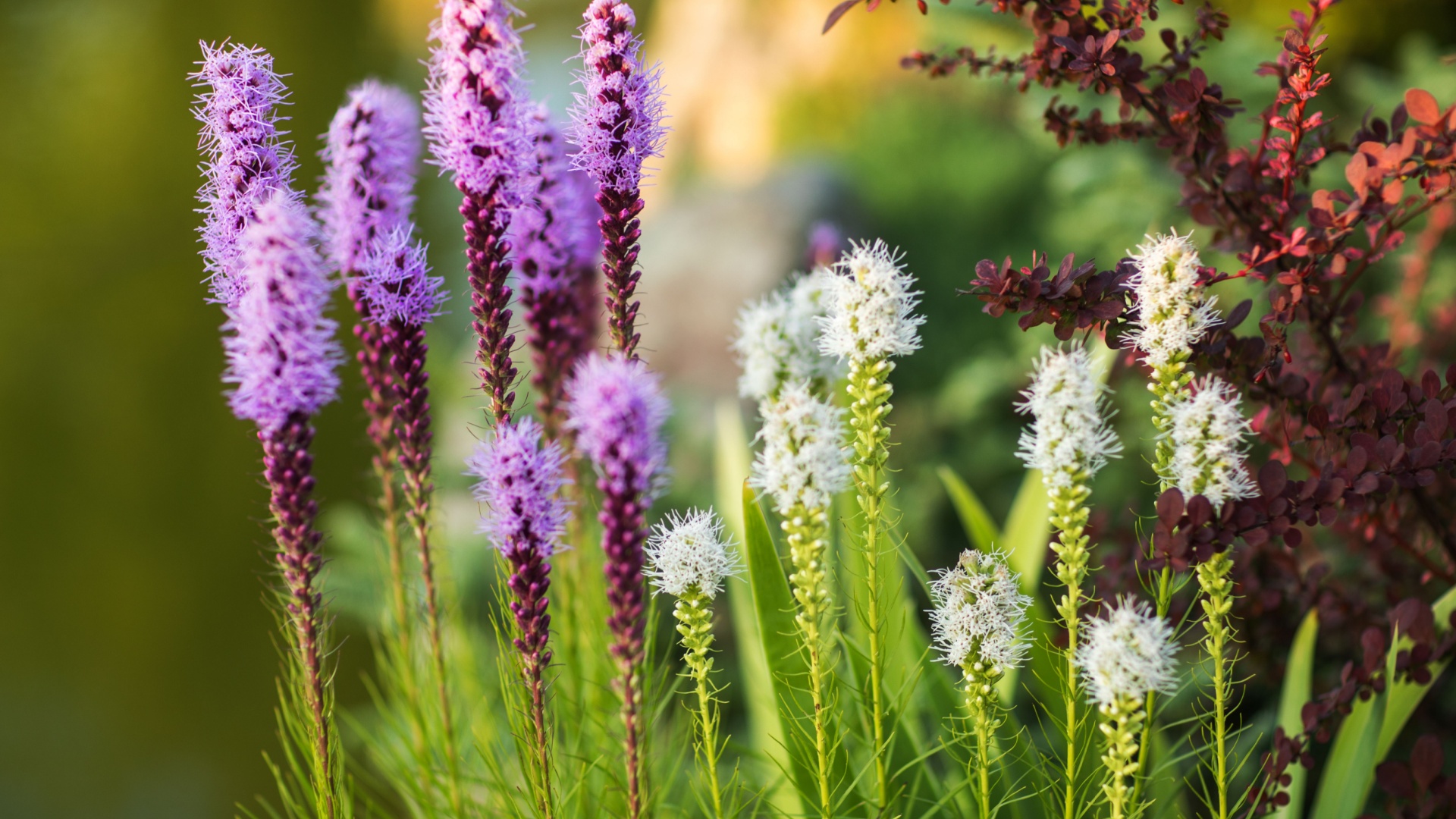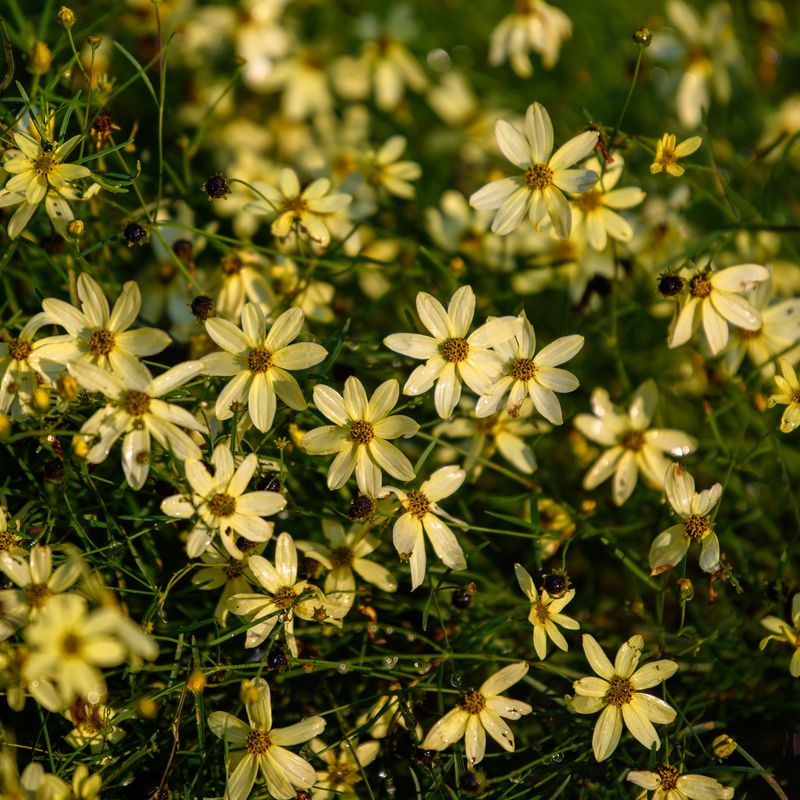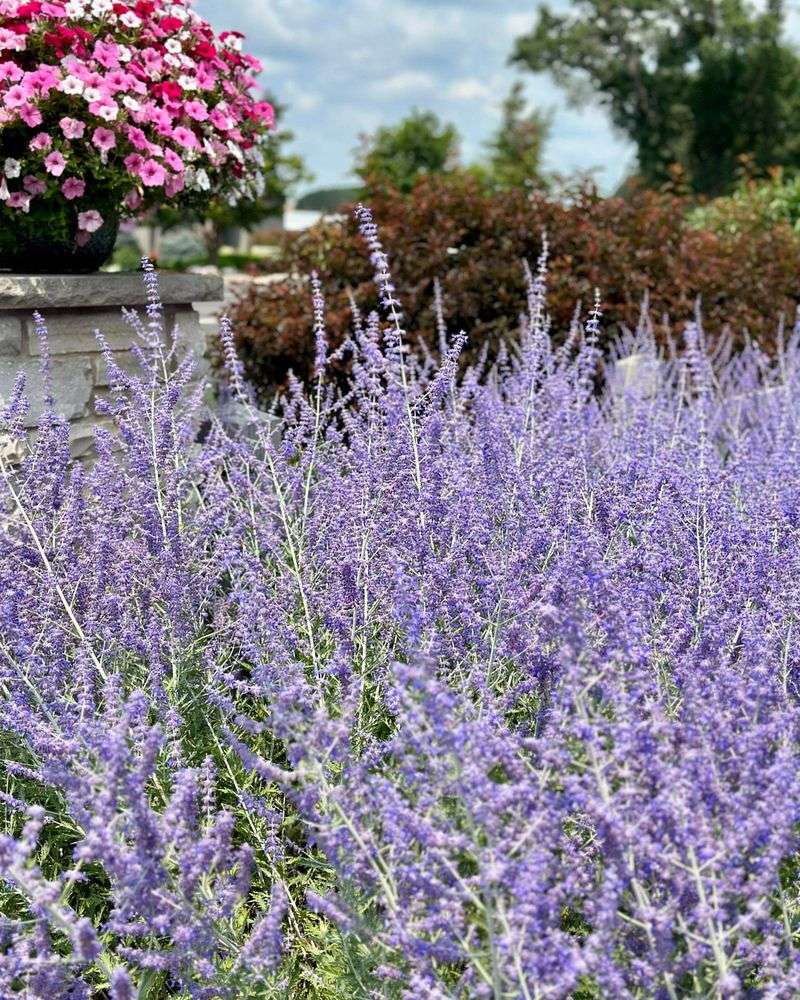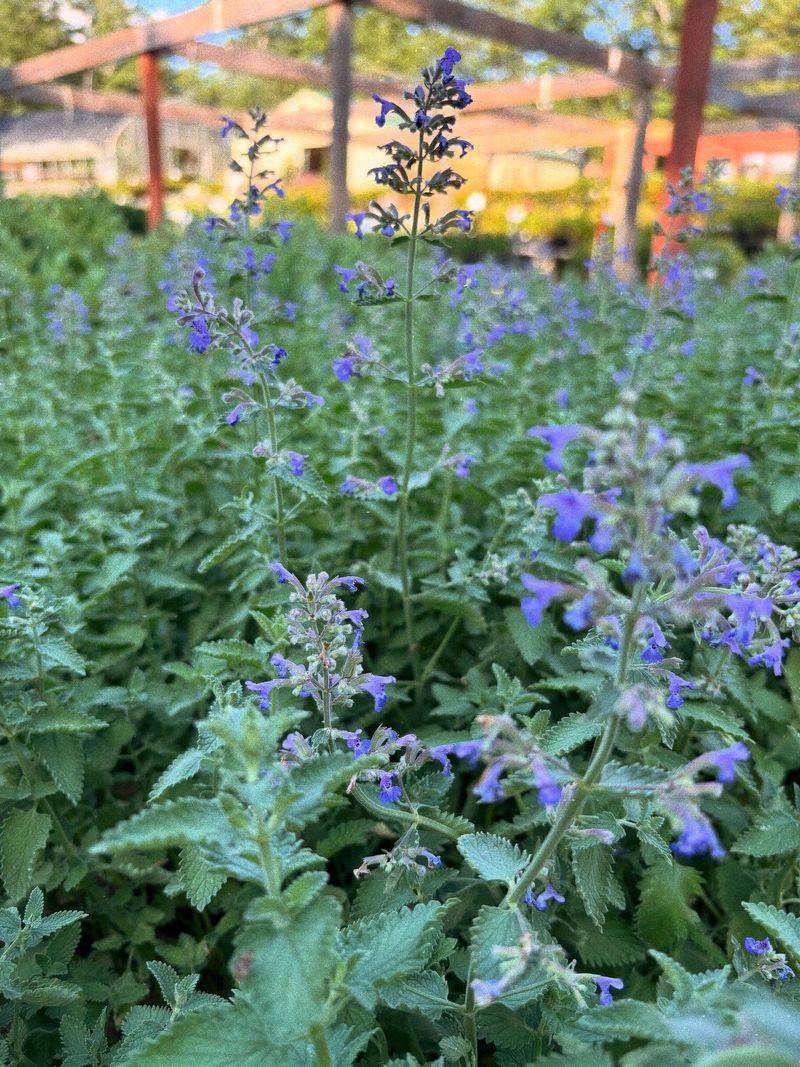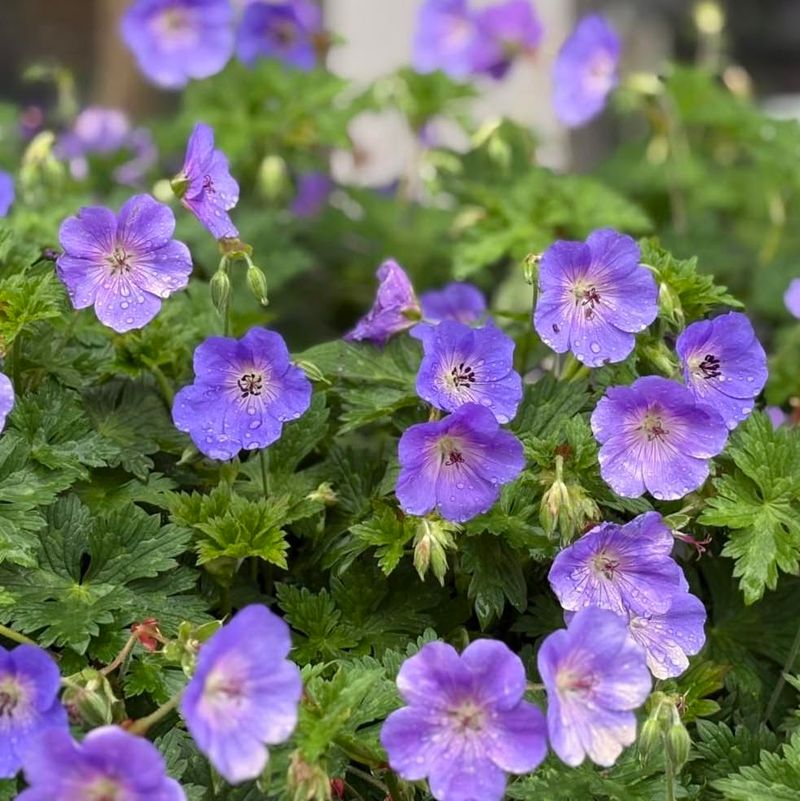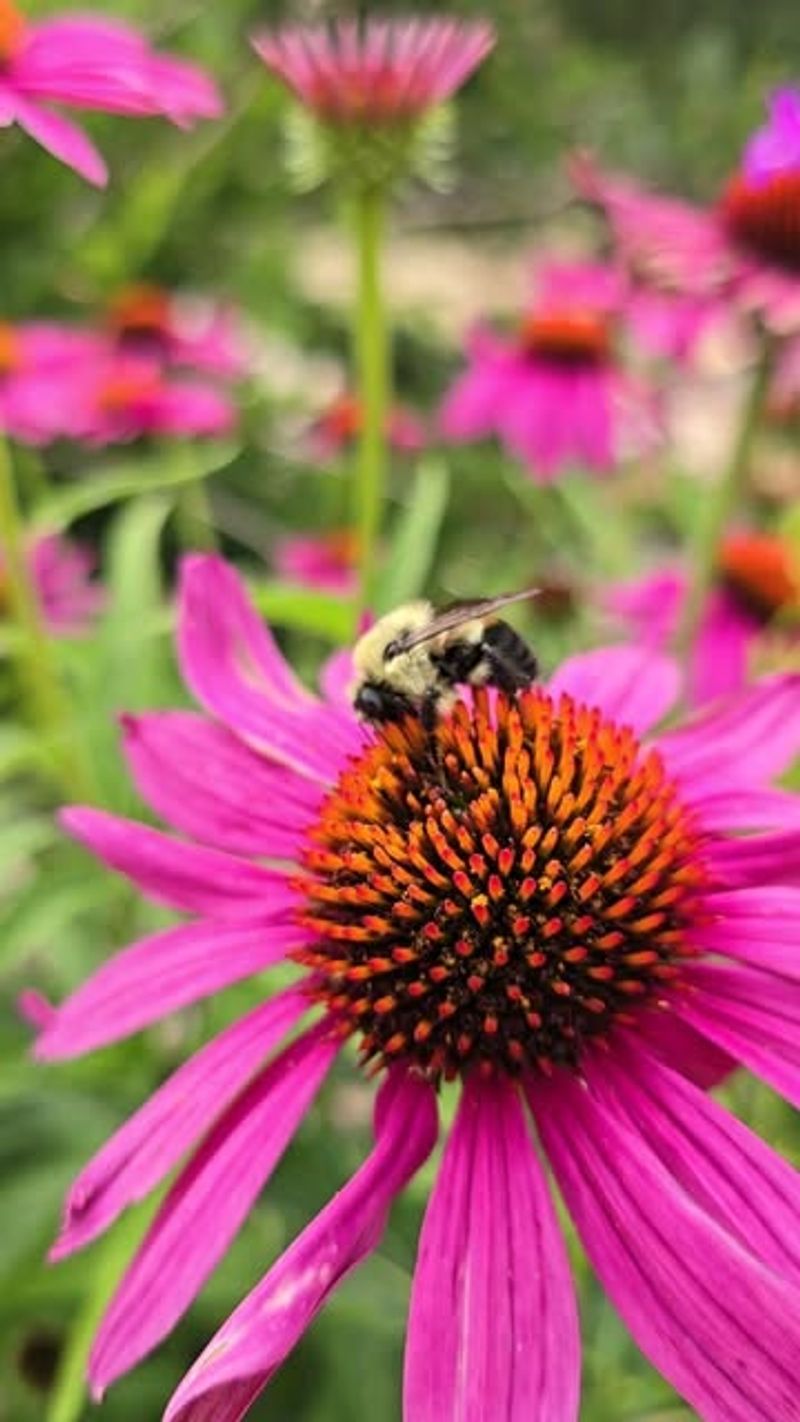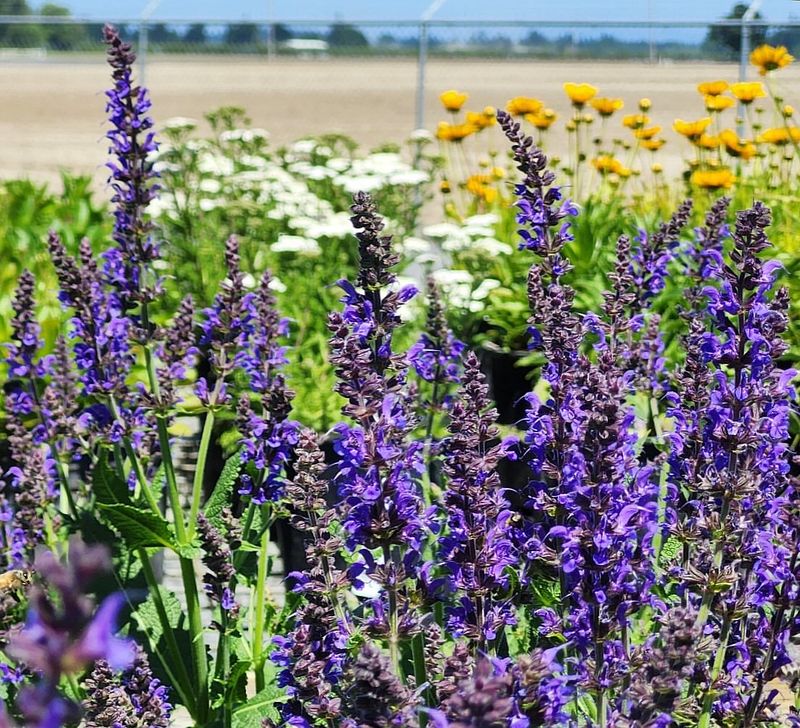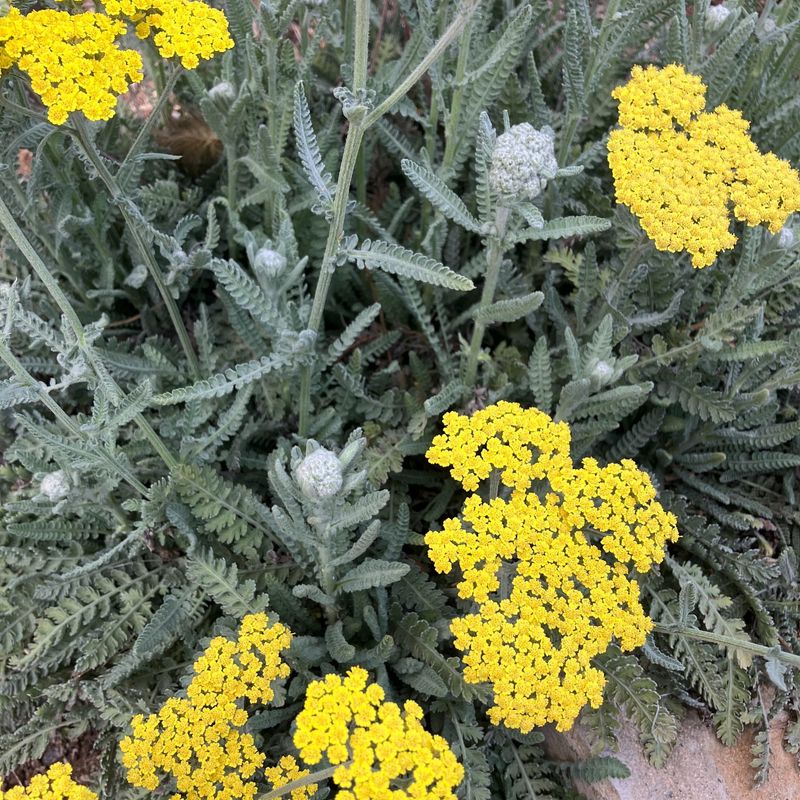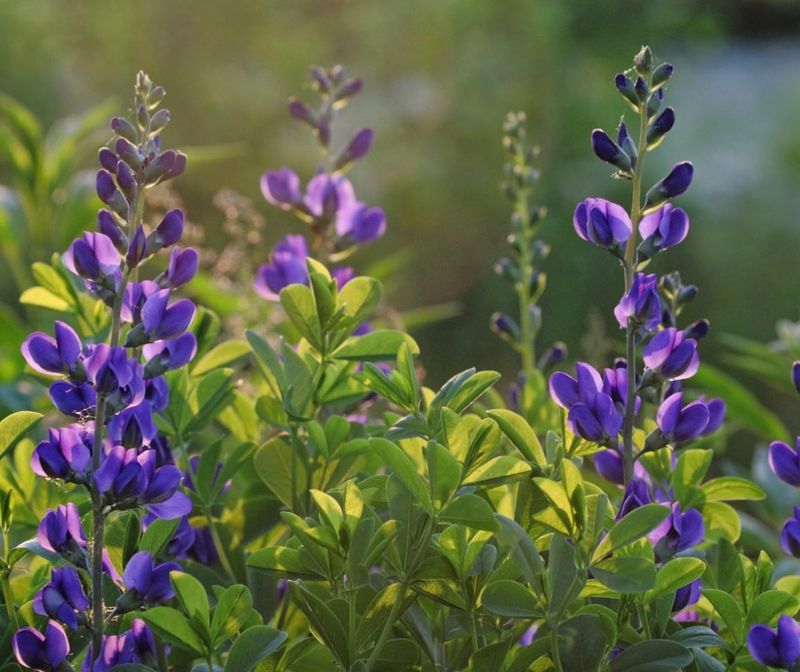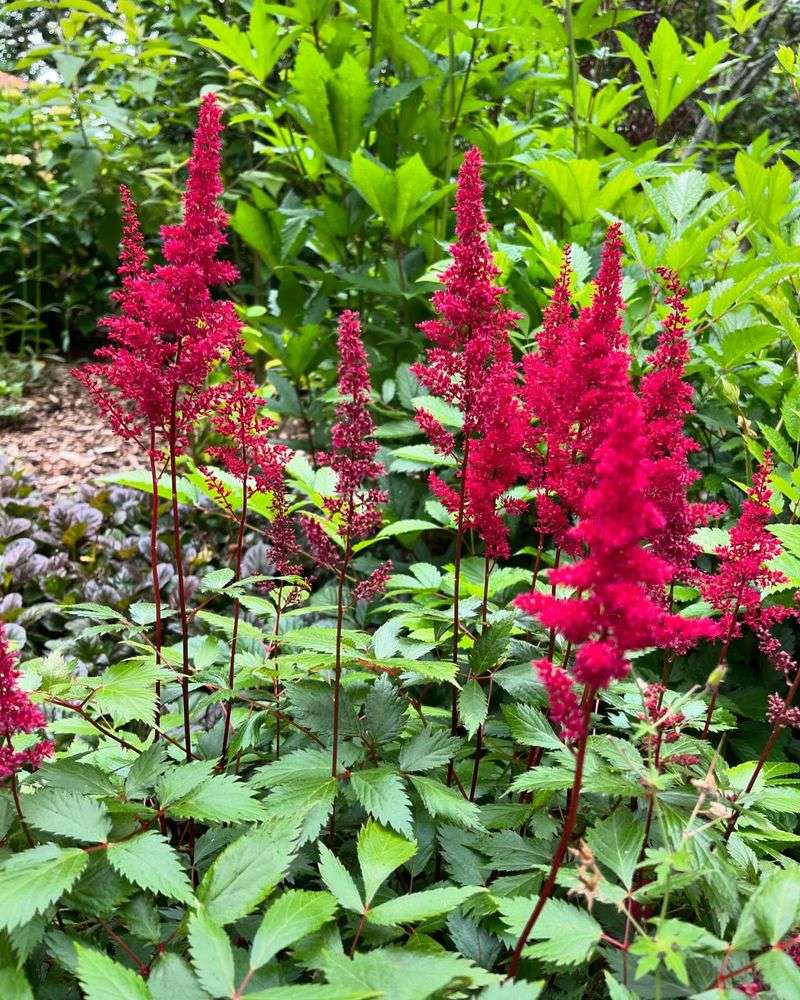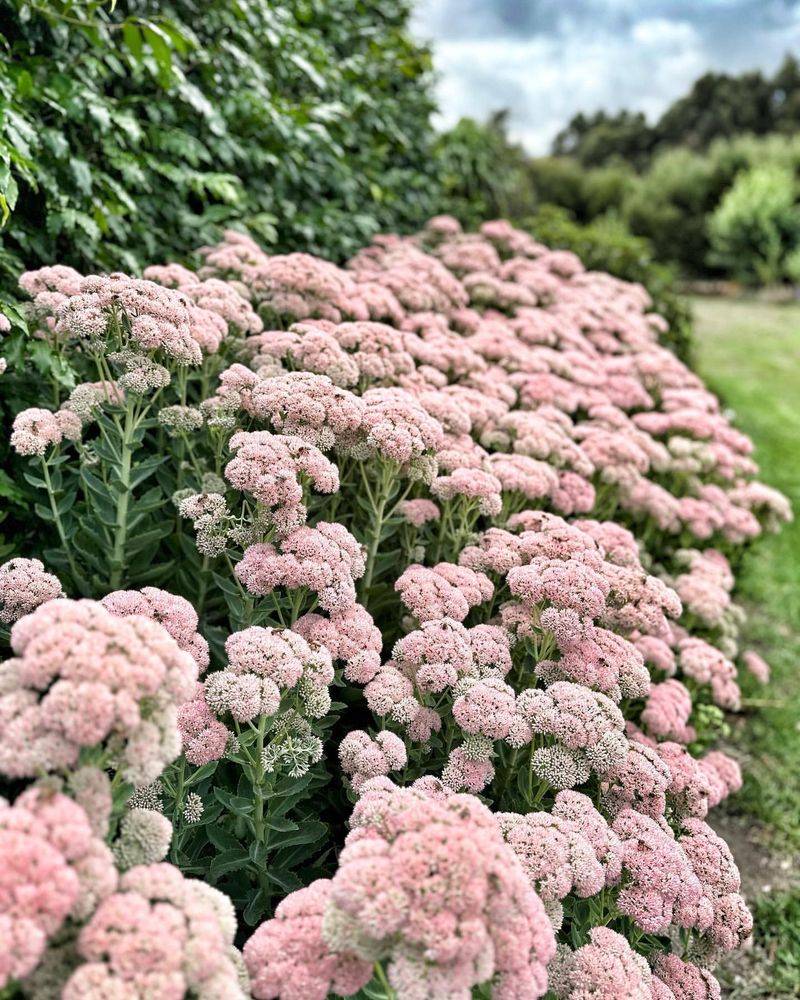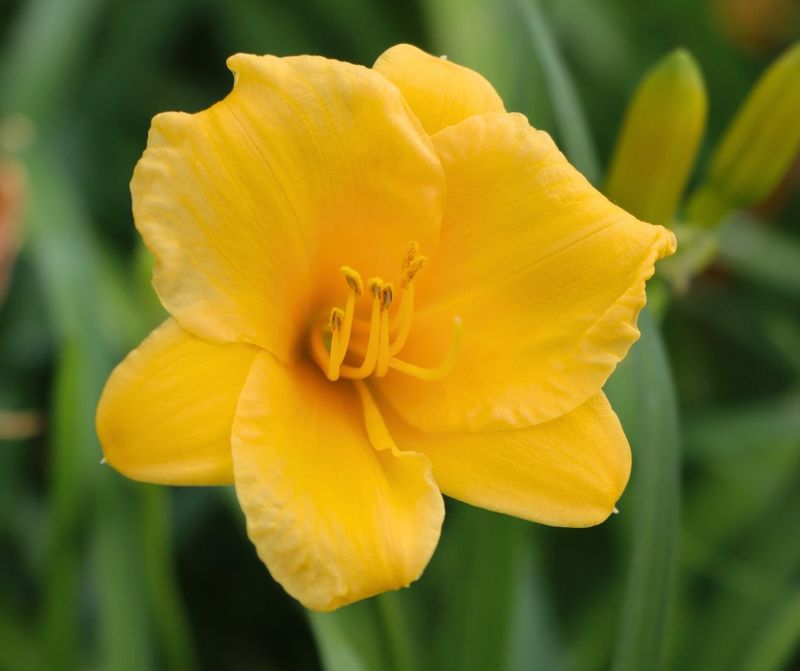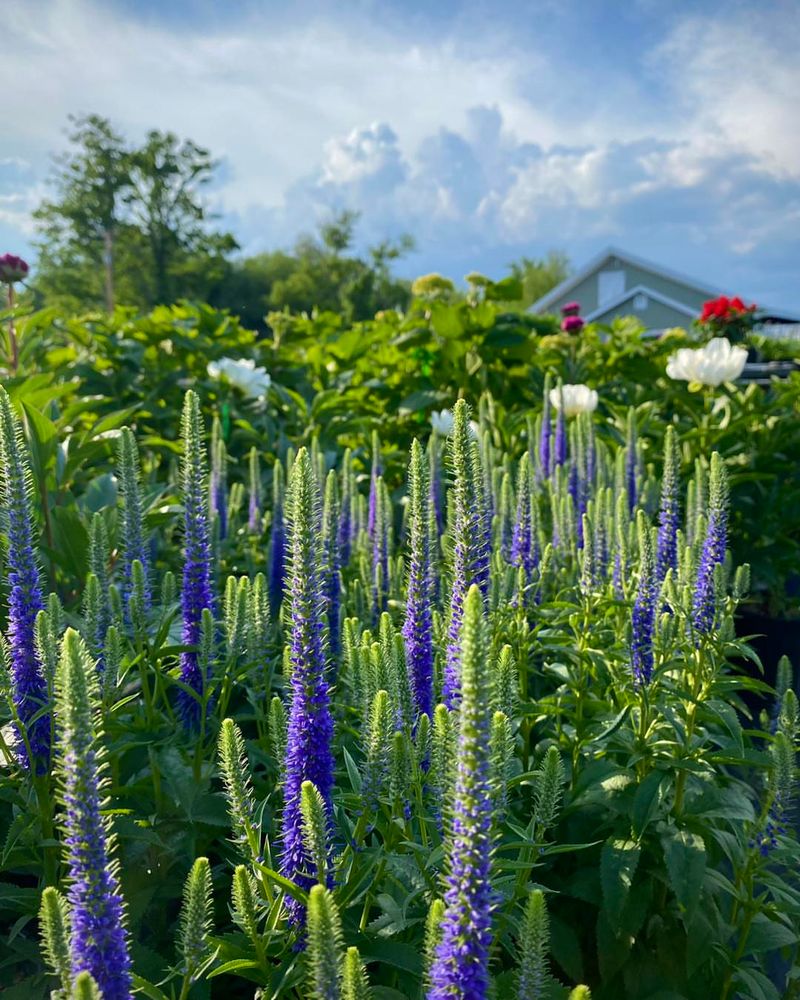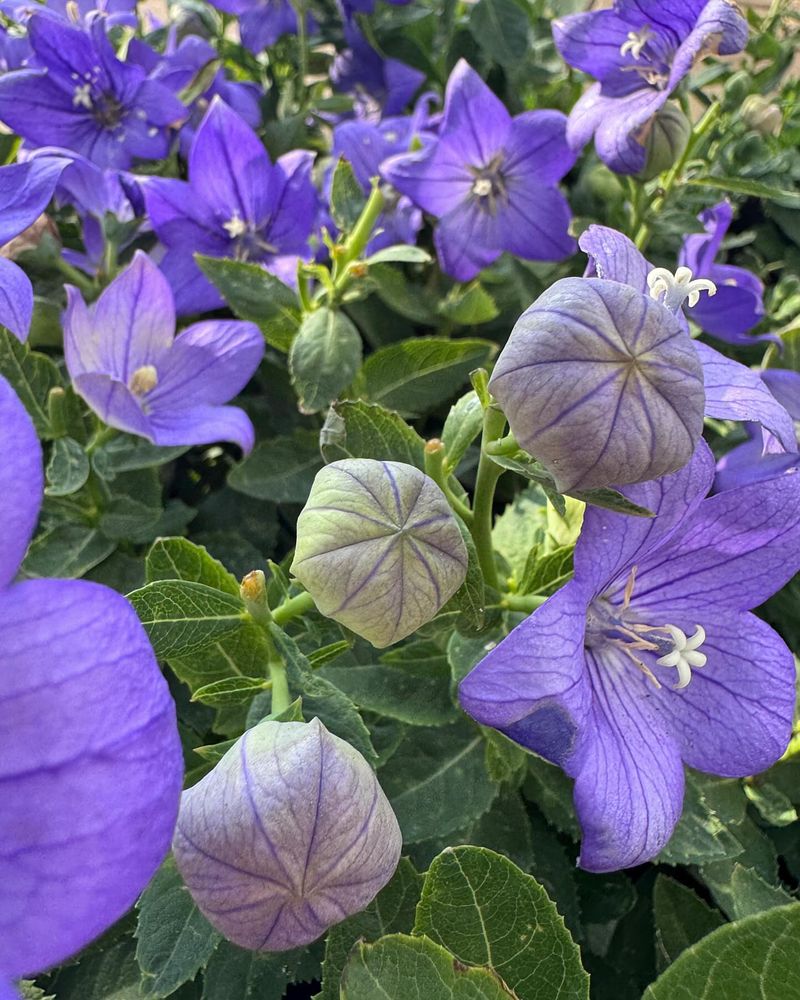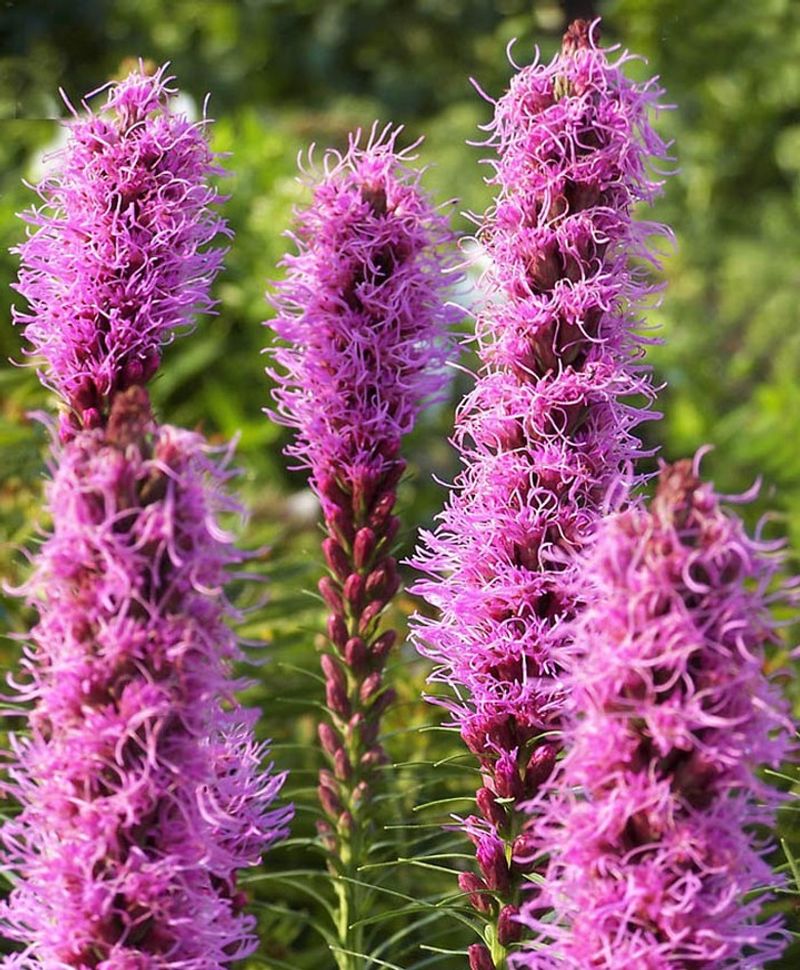Michigan gardeners know the challenge of maintaining beautiful blooms throughout our variable growing season. Wouldn’t it be wonderful to enjoy colorful flowers all summer without constantly snipping spent blooms?
Low-maintenance perennials that keep flowering without deadheading are perfect for busy gardeners who want lasting color with minimal effort.
1. Coreopsis ‘Moonbeam’
Sunny yellow flowers dance above delicate, thread-like foliage from early summer until fall frost. The daisy-like blooms naturally shed their spent petals, eliminating the need for deadheading while maintaining a tidy appearance.
Plant ‘Moonbeam’ in well-drained soil where it receives at least 6 hours of sun daily. Even during Michigan’s hottest summer weeks, this drought-tolerant perennial keeps producing cheerful blossoms that attract butterflies to your garden.
2. Russian Sage
Aromatic silver-gray foliage topped with lavender-blue flower spikes creates a stunning display from July through October. Russian sage stands tall at 3-4 feet, forming a cloud of color that sways gracefully in Michigan’s summer breezes.
Extremely drought tolerant once established, this perennial thrives in poor soils where other plants struggle. The woody stems require no deadheading and remain attractive even after flowering, providing winter interest in your Michigan landscape.
3. Nepeta ‘Walker’s Low’
Clouds of lavender-blue flowers hover above aromatic gray-green foliage, creating months of color from late spring through fall. Commonly called catmint, this perennial naturally reblooms without deadheading, especially when given a light shearing mid-summer.
Michigan gardeners love its deer resistance and ability to thrive in our climate. The fragrant foliage deters garden pests while attracting beneficial pollinators. Plant along pathways where brushing against the leaves releases their pleasant minty scent.
4. Black-Eyed Susan
Golden-yellow petals surrounding dark centers create a classic wildflower look that brightens Michigan gardens from July until frost. These native beauties self-clean effectively, dropping spent petals while new buds continue to open.
Rudbeckia thrives in Michigan’s climate, standing strong through summer storms and humidity. Leave the seedheads in place after flowering ends to feed winter birds and provide visual interest during snowy months. A single planting will gradually form impressive clumps over several seasons.
5. Geranium ‘Rozanne’
Violet-blue flowers with white centers bloom continuously from late spring until hard frost, creating a carpet of color that few perennials can match. The mounding habit works beautifully in borders or spilling over retaining walls.
Unlike many perennials that fade mid-summer, ‘Rozanne’ maintains vigor throughout Michigan’s growing season. The attractive deeply-cut foliage turns reddish in fall, adding another season of interest. Hardy in zones 4-8, this geranium survives Michigan winters with minimal protection.
6. Echinacea ‘PowWow Wild Berry’
Vivid magenta-pink flowers stand tall on sturdy stems from early summer through fall. Unlike older coneflower varieties that produce a single flush of blooms, this improved cultivar continues flowering without deadheading.
Michigan’s native pollinators flock to these blooms, making them ecological powerhouses for your garden. The compact habit (about 24 inches tall) prevents flopping even during summer storms. Winter seedheads attract goldfinches and other birds, extending this plant’s garden value well beyond the growing season.
7. Salvia ‘May Night’
Deep purple-blue spikes emerge in late spring, creating dramatic vertical interest that persists through summer. The initial heavy bloom gives way to sporadic reblooming without requiring deadheading, especially in cooler northern Michigan gardens.
Deer and rabbits avoid this aromatic perennial, making it perfect for problem areas. The gray-green foliage remains attractive even when not in bloom. Plant in groups of three or five for maximum impact against lighter-colored companions like coreopsis or yarrow.
8. Yarrow ‘Moonshine’
Flat clusters of sulfur-yellow flowers brighten Michigan gardens from June through September. The silvery, feathery foliage creates beautiful contrast even when the plant isn’t blooming, looking especially striking after summer rainstorms.
Extremely drought tolerant once established, yarrow thrives in Michigan’s sandy soils where other perennials struggle. No deadheading is needed as new flower clusters continually emerge. Cut stems make excellent additions to fresh or dried arrangements, extending their usefulness beyond the garden.
9. Baptisia ‘Indigo Spires’
Spires of deep blue-purple flowers emerge in late spring above attractive blue-green foliage. After the initial bloom, decorative seed pods develop, creating interesting structural elements that persist through fall.
False indigo develops a deep taproot, making it extremely drought resistant once established in Michigan gardens. The shrub-like habit requires no staking even during summer storms. Mature plants reach 3-4 feet in height and width, creating dramatic presence in perennial borders.
10. Astilbe ‘Fanal’
Ruby-red plumes rise above glossy, fern-like foliage in early summer, creating dramatic color in shady Michigan gardens. The spent flowers dry in place, maintaining their structure and providing winter interest without becoming unsightly.
Perfect for woodland gardens or north-facing beds, astilbe tolerates Michigan’s heavy clay soils better than many perennials. Regular moisture produces the best results, making this an excellent choice near downspouts or naturally damp areas. Combine with hostas and ferns for a low-maintenance shade garden.
11. Sedum ‘Autumn Joy’
Succulent blue-green foliage forms a perfect backdrop for the broccoli-like flower heads that emerge green in summer, then transform to pink and finally copper-red by fall. Each color phase lasts weeks, creating months of changing interest.
Michigan winters pose no threat to this hardy perennial. The dried flower heads stand above snow, creating winter interest and habitat for beneficial insects. Plant in full sun with well-drained soil to prevent center rot, especially in areas with heavy spring snowmelt.
12. Daylily ‘Stella de Oro’
Golden-yellow trumpets open continuously from early summer until frost, making this the longest-blooming daylily for Michigan gardens. Individual flowers last just one day, but they naturally shed without requiring deadheading.
Virtually indestructible in Michigan’s climate, ‘Stella’ tolerates road salt, clay soil, and periodic drought once established. The grassy foliage stays attractive all season, forming neat clumps that rarely need division. Plant along driveways or in difficult spots where other perennials struggle.
13. Veronica ‘Sunny Border Blue’
Intense violet-blue spikes create vertical interest from June through September in Michigan gardens. The initial heavy flush gives way to sporadic reblooming throughout summer without requiring deadheading.
Compact habit prevents the flopping common in older veronica varieties. Plant in groups of three or five for maximum impact in the middle of perennial borders. Butterflies frequently visit the flowers, adding movement and life to your Michigan garden throughout the growing season.
14. Amsonia ‘Blue Ice’
Periwinkle-blue star-shaped flowers cover this compact perennial in late spring, creating a cloud of color that transitions to attractive seed pods. The willow-shaped leaves remain pristine all summer before turning brilliant gold in fall.
Michigan gardeners appreciate the four-season interest of this native plant alternative. Extremely low maintenance once established, amsonia forms slowly expanding clumps that rarely need division. The milky sap deters deer and rabbits, making this perfect for problem garden areas.
15. Heuchera ‘Palace Purple’
Burgundy-purple foliage creates dramatic color from spring through fall, even in Michigan’s challenging conditions. Delicate sprays of tiny white flowers rise above the leaves in early summer, attracting hummingbirds to your garden.
While the flowers are charming, the colorful leaves are the main attraction of this shade-tolerant perennial. Plant in groups under deciduous trees where spring sun gives way to dappled summer shade. The evergreen foliage often persists through mild Michigan winters, providing four-season interest.
16. Platycodon ‘Sentimental Blue’
Balloon-like buds slowly inflate before popping open into star-shaped blue flowers, creating weeks of evolving interest. This compact balloon flower blooms from July through September without deadheading in Michigan gardens.
Late to emerge in spring, mark its location to avoid accidental digging. The sturdy stems rarely need staking, standing up well to Michigan summer storms. Plant among spring bulbs or early-blooming perennials that will mark its location and fill the space while platycodon is dormant.
17. Liatris ‘Kobold’
Purple bottle-brush flowers open from top to bottom on sturdy stems, creating weeks of vertical interest from July through August. The unusual blooming pattern ensures prolonged display without deadheading.
Michigan’s native butterflies and bees flock to blazing star, making it a pollinator powerhouse. The compact ‘Kobold’ variety reaches just 18-24 inches, perfect for middle positions in perennial borders. Plant in groups of 5-7 bulbs for maximum impact and natural appearance in your Michigan landscape.

